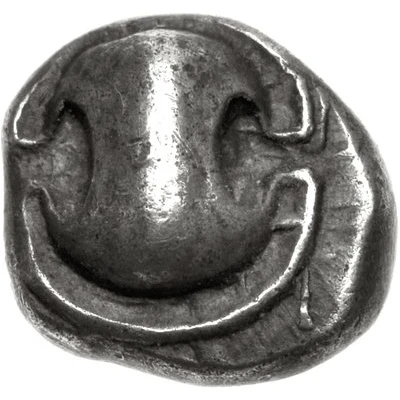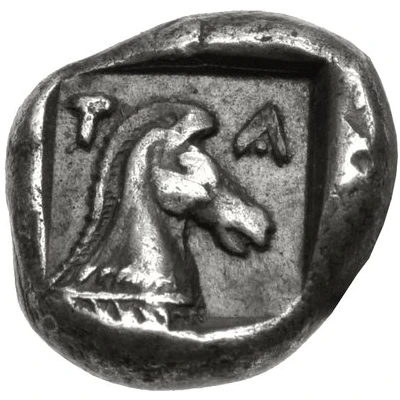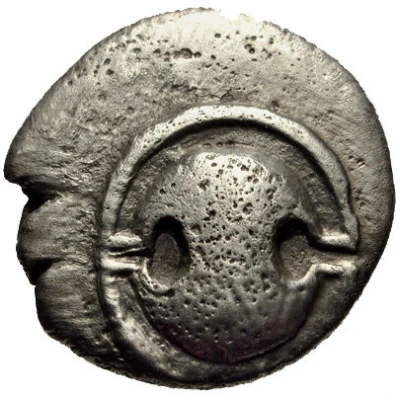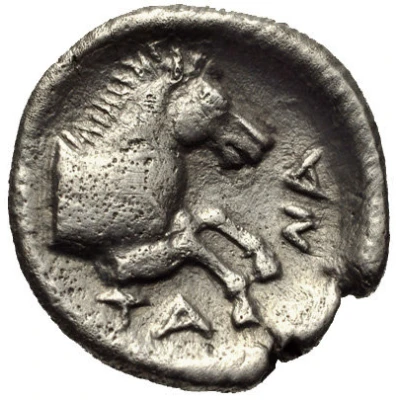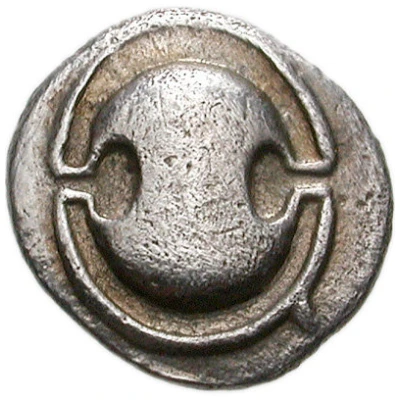
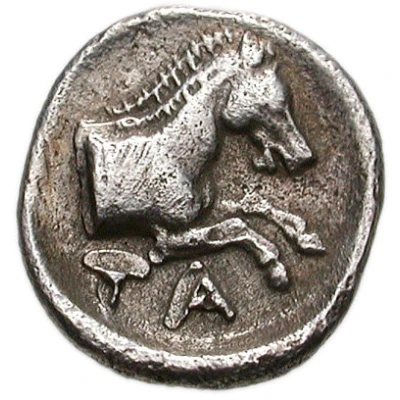

© Classical Numismatic Group, Inc.
Obol 400 BC - 350 BC
| Silver | 0.76 g | 11.0 mm |
| Issuer | Tanagra (Boeotia) |
|---|---|
| Type | Standard circulation coin |
| Years | 400 BC - 350 BC |
| Value | Obol (⅙) |
| Currency | Drachm |
| Composition | Silver |
| Weight | 0.76 g |
| Diameter | 11.0 mm |
| Shape | Round (irregular) |
| Technique | Hammered |
| Demonetized | Yes |
| Updated | 2024-10-09 |
| Numista | N#146678 |
|---|---|
| Rarity index | 95% |
Reverse
Forepart of bridled horse facing right and TA below. All within concave circle
Script: Greek
Lettering: TA
Comment
Head, Boeotia p. 52; Traité III 347, pl. CCIV, 9; McClean 5560, pl. 200, 32.
Interesting fact
The Obol coin from Tanagra (Boeotia) was used as a form of currency in ancient Greece during the 4th century BC. The word "obol" comes from the Greek word "obelos," which means "roasting spit." This is because the coin was originally worth enough to buy a small roasting spit, or a pair of sandals. Over time, the value of the obol decreased, but it remained a widely used denomination in ancient Greece.
